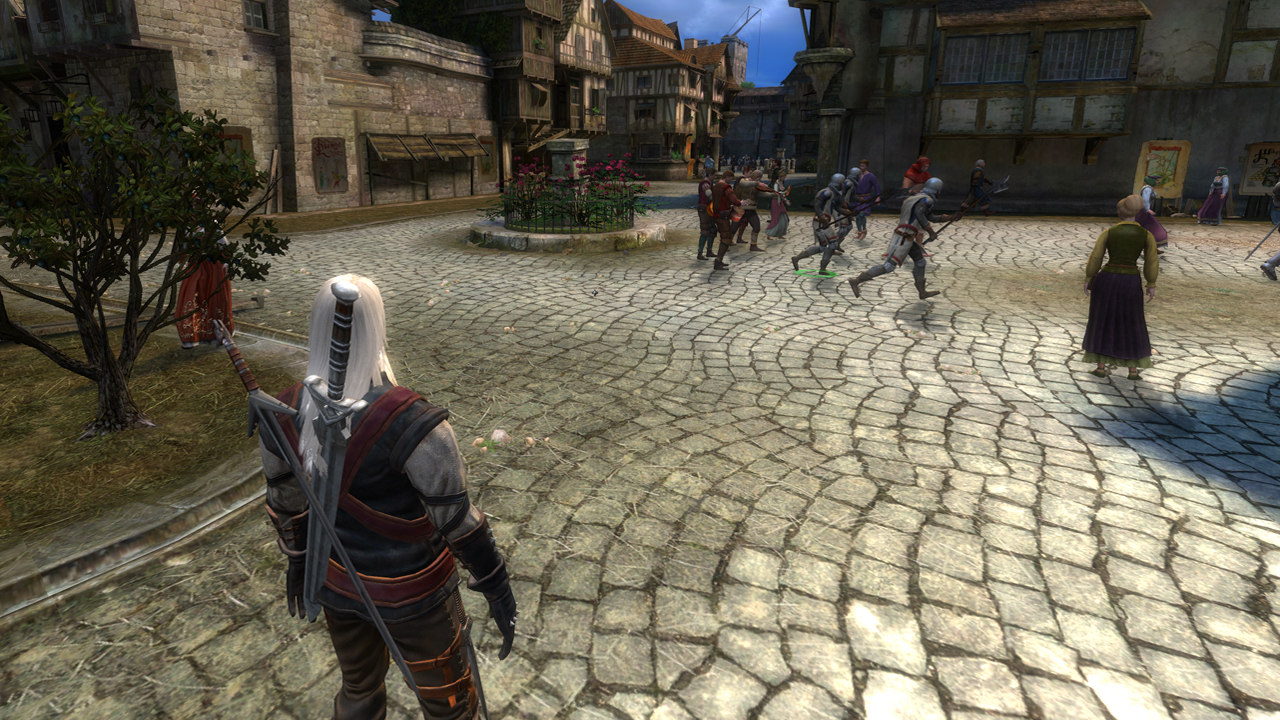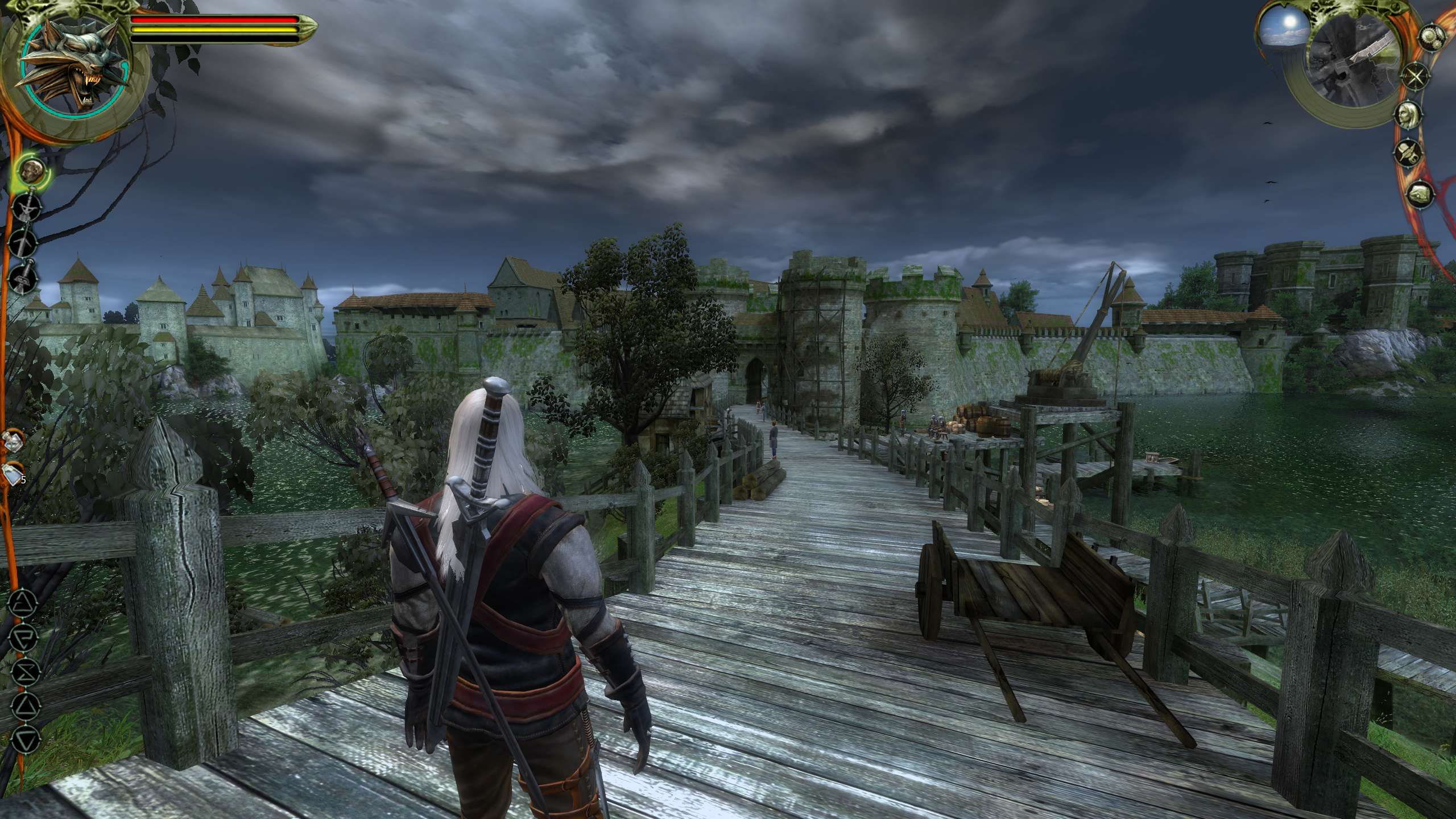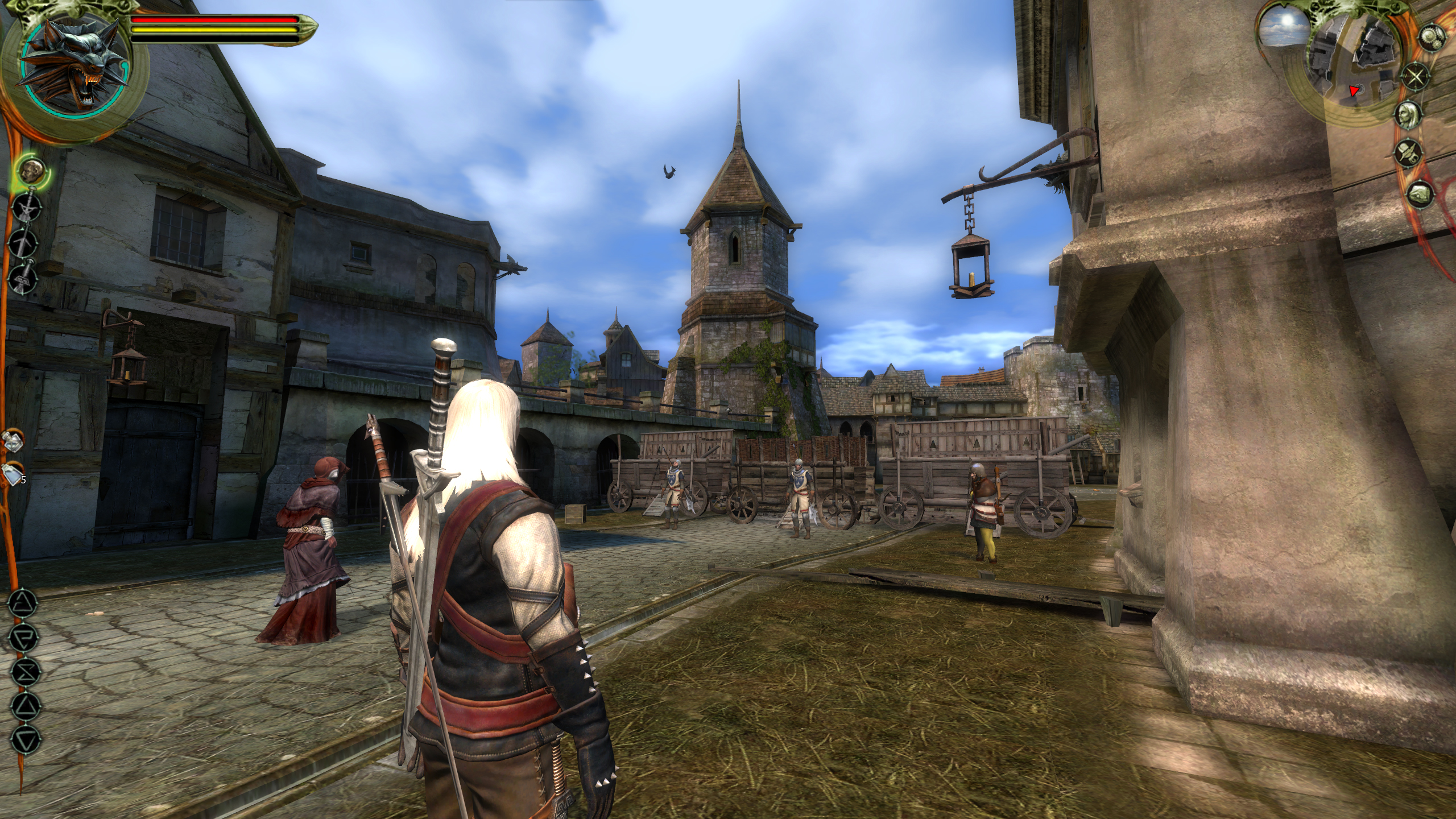The oft-overlooked first Witcher has one of the best cities in gaming
The first Witcher's big city walked so Novigrad could run.

The Witcher 3's Novigrad is a defining RPG city: a bustling metropolis on the brink of catastrophe, threatened both by invaders outside its borders and religious zealotry within them. But this wasn't CD Projekt's first portrait of a city on fire.
2007's The Witcher is often overlooked in favour of its prettier and better-translated sequels, but the game that first brought CD Projekt to international attention remains a gem, with much of what made those later games special already fully or partially realised. Vizima, the city in which you spend about half the game, is brimming with as much life and character as Novigrad, and foreshadows CD Projekt's later success with designing urban environments.

Local color
My favourite thing about Vizima is its layout and structure: it is a low, cramped, muddy medieval city with twisting streets and neighbourhoods divided by function, race, and class, with landmarks like the main roads intersecting at St Lebioda's Hospital, the curving path to the Burning Rose barracks, and the large courtyard in front of the New Narakort inn making navigation intuitive.

The Witcher 4: What we know
The Witcher season 3: Trailers and cast
Witcher 3 mods: Good hunting
It's not just the landmarks that stand out either: even the 'filler' buildings you can't enter look different from one another. While taking a tour of my old save file, I was surprised at how every block looked unique. Any reusing of building models to construct the city's layout is well hidden.
The shiny seventh console generation graphics are resting on a heavily modified version of the Aurora engine BioWare used to create the original Neverwinter Nights, pushed well beyond what you might expect of it based on that 2001 RPG. The Witcher has a dynamic time of day system, with NPCs proceeding through their schedules and even realistically responding to the weather—it never gets old seeing them scurry for cover once it starts raining—adding to the immersion.

About town
When you first arrive in Vizima during the game's second act, you are restricted to the Temple Quarter, an impoverished neighbourhood home to the city's dwarven and elven populations. Proceeding to Act 3, you're allowed to move freely between the Temple Quarter and the ritzier Trade Quarter. The class distinctions are palpable, with better armed and armoured guard patrols, a more well-heeled citizenry, and a dearth of non-human inhabitants. It adds to the texture of the city, building on The Witcher's fiction at every level of the simulation.
Like The Witcher 3's Novigrad under siege, Vizima is an afflicted city, with a virulent plague and tensions between oppressed nonhumans and a fundamentalist religious movement threatening to boil over. In Vizima, Novigrad, and even The Witcher 2's Vergen, CD Projekt has demonstrated a deft hand at making players fall in love with a fictional city, then posing an existential threat to it. It captures the fear and anxiety inherent in one of the great horrors of history: how cities can be shockingly fragile in the face of external threats.
The biggest gaming news, reviews and hardware deals
Keep up to date with the most important stories and the best deals, as picked by the PC Gamer team.
Vizima reaches an ignoble end in The Witcher 3: the Nilfgaardian empire conquers the city, and an early sequence sees you tour the royal palace under new management, with craftsmen hacking away at marble reliefs It's a sad end to the city you spent so much time in, but CD Projekt's loving recreation of the space in a new engine eight years later suggests that the developers recalled Vizima as fondly as I did.
Ted has been thinking about PC games and bothering anyone who would listen with his thoughts on them ever since he booted up his sister's copy of Neverwinter Nights on the family computer. He is obsessed with all things CRPG and CRPG-adjacent, but has also covered esports, modding, and rare game collecting. When he's not playing or writing about games, you can find Ted lifting weights on his back porch.

